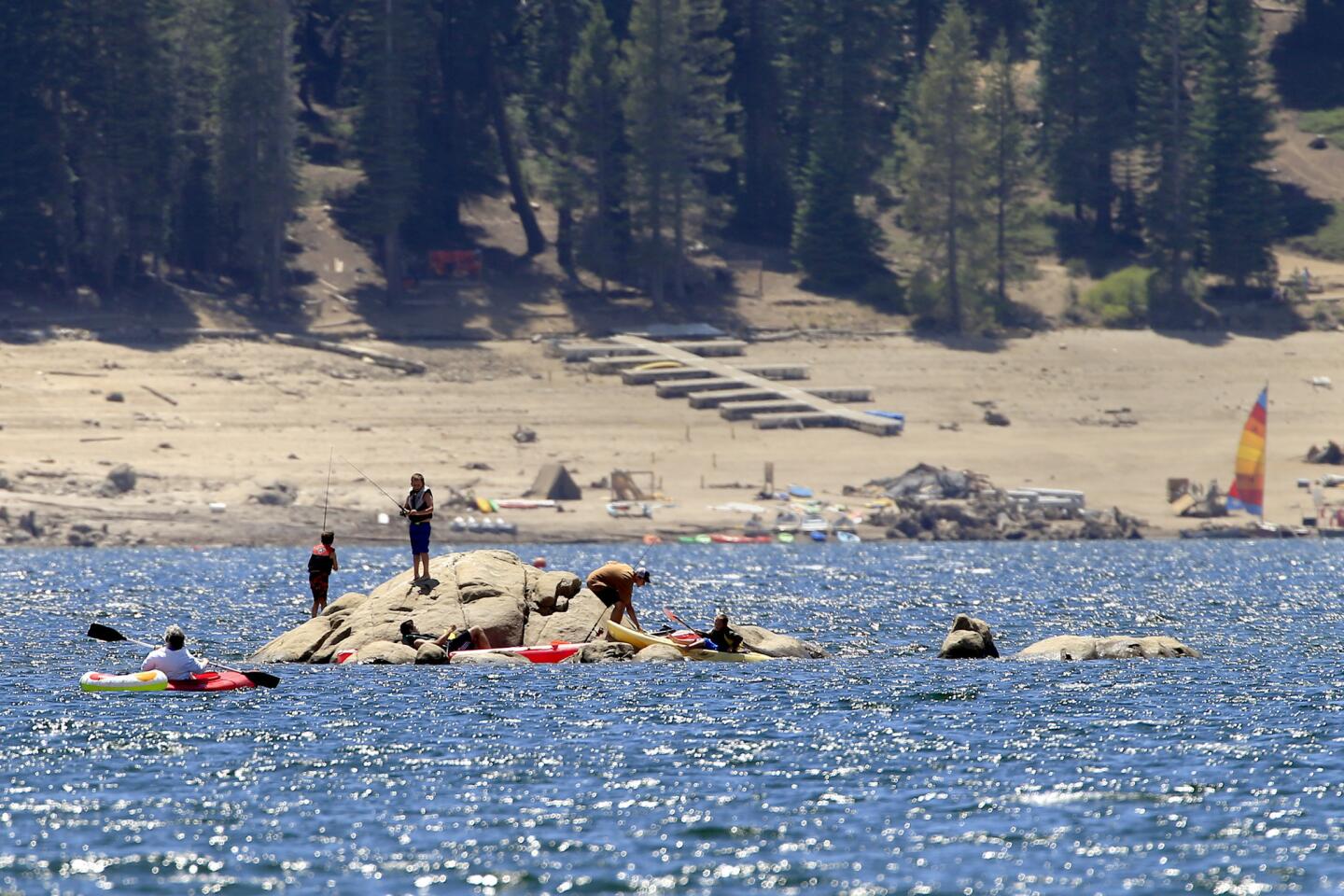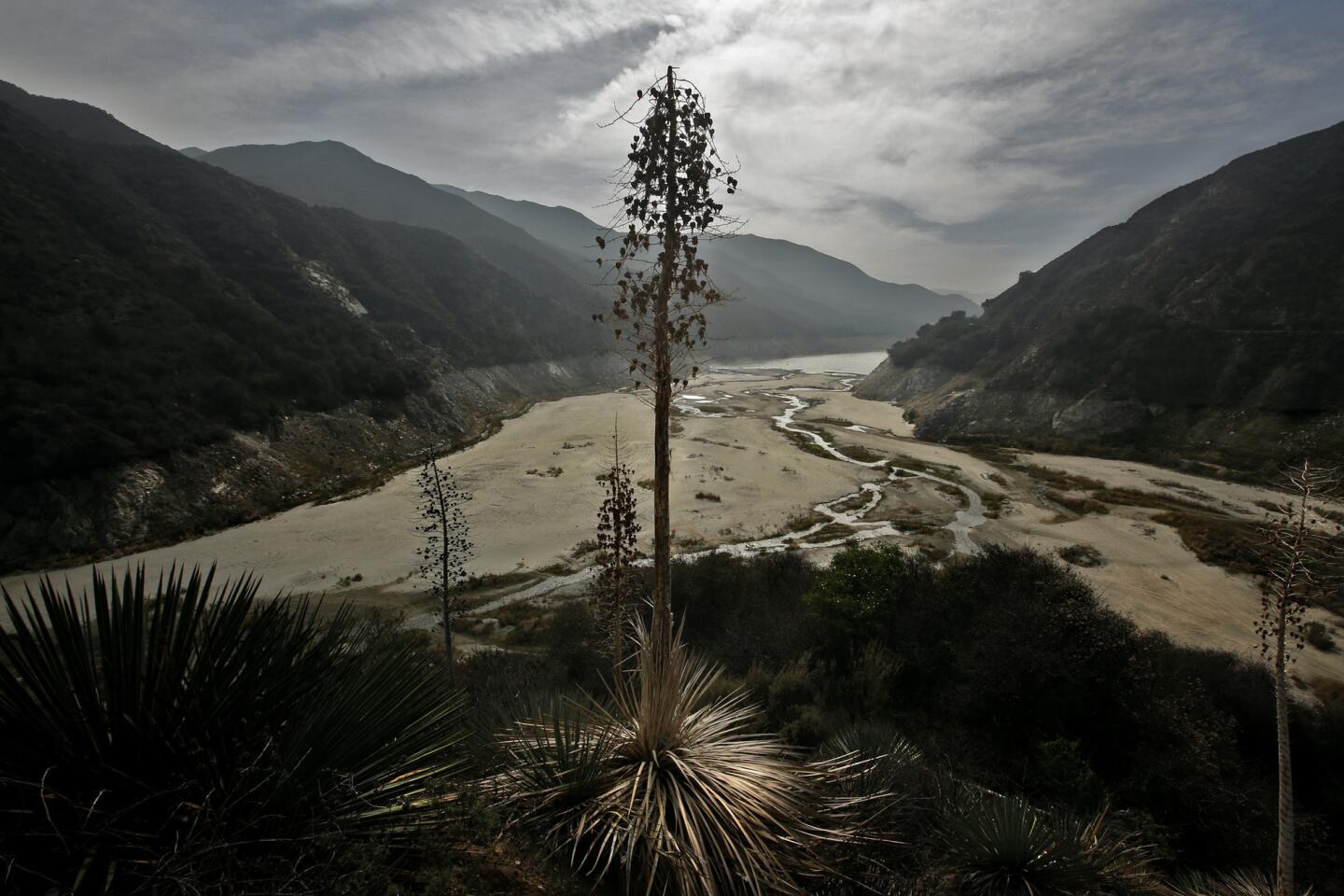California’s severe drought unchanged despite record thunderstorms
A series of thunderstorms that have hit California in recent weeks may have delivered devastating torrents of rain in some areas, but on the whole they were “inconsequential” in terms of easing the state’s worsening drought, according to a report issued Thursday.
The U.S. Drought Monitor, in its weekly report, said that the locations of the rain and the rate it fell minimized the relief for California’s parched landscape.
Because the heaviest showers were limited in scope, had high runoff rates and did not happen in two of the state’s key watersheds -- the Colorado River basin and the Sierra Nevada -- they “did not allow for significant percolation into drought-parched soils,” the report stated.
The report said the only short-term benefits of the rain was reduced irrigation demands and improved evaporation rates.
Though climatologists noted that last weekend’s storm over Mt. Baldy and the Forest Falls community -- the kind only seen once about every 500 years -- was just a stronger version of typical summer weather over the Southwest, the benefits appeared to evade California.
In fact the thunderstorms were incredibly destructive, sending mudflows through mountain towns in the San Gabriel Mountains that destroyed homes and killed one person, while sparking dozens of wildfires that continue to burn in Northern California.
The unusual weather events are occurring against the backdrop of more than half of California being under the most severe level of drought for the first time since the federal government began issuing regular drought reports in the late 1990s.
Since late July, roughly 58% of the state was considered to be experiencing an “exceptional” drought -- the harshest on a five-level scale.
The entire state has been in some level of drought since May, but more of it has since fallen into more severe categories -- “extreme” and “exceptional.” Nearly 22% more of California was added into the exceptional drought category two weeks ago.
California is also more than a year’s worth of water short in its reservoirs and moisture in the state’s topsoil and subsoil has nearly been depleted, according to the report.
“The bottom line is, there’s a lot of ground to make up,” Mark Svoboda, a climatologist with the National Drought Mitigation Center told The Times last week. “Mother Nature can’t put it back in that fast.”
The U.S. Drought Monitor issues updates weekly and is a joint effort of the National Drought Mitigation Center, the U.S. Department of Agriculture and the National Oceanic and Atmospheric Administration.
For breaking California news, follow @JosephSerna.
More to Read
Sign up for Essential California
The most important California stories and recommendations in your inbox every morning.
You may occasionally receive promotional content from the Los Angeles Times.
































